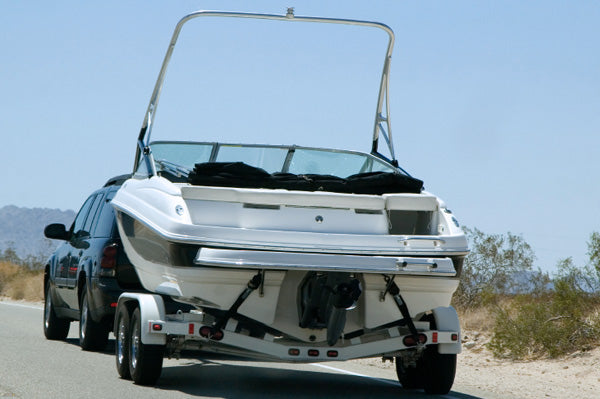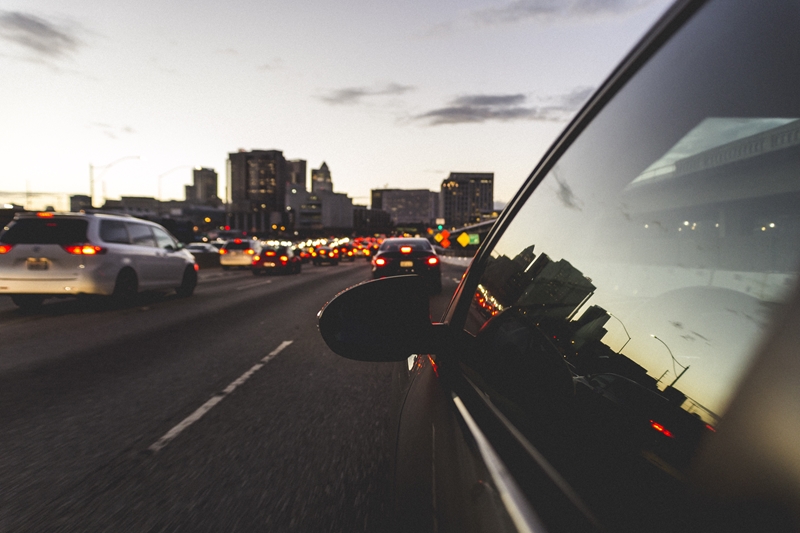
As everyone knows, boating is a fantastic way to spend one's time in the warm weather months. But, there eventually comes a time when the owner needs to take his or her craft out of the water for one reason or another, be it the cold weather approaching, routine maintenance, or the need to want to explore a new area of the country.
There is a fairly simple way to do this - hitch it to your car with a trailer and take to the open road. However, you need to know how best to prepare not only the trailer, but also the boat and the car to keep your equipment and watercraft safe, in addition to yourself and the other drivers on the road. It's not as easy as just hooking it up and driving away.
But, with a little know-how and research, road towing can become a painless method of transportation and can allow you to see new areas of the country with your car and boat that you might not have been privy to otherwise. Here are few tips and tricks to make this possible.
The legalities
First things first - you must become familiar with the rules and regulations that accompany boat towing. For instance, as Without a Hitch pointed out, there is a maximum mass that a trailer can hold, which is either the towbar's capacity or amount specifically designated by the vehicle manufacturer, which ever amount is lower. Moreover, there are regulations for the trailer's braking system: trailers with a gross trailer mass (GTM) over 750 kilograms must have an efficient braking system operating on all wheels with at least one axle. The source specified that if the GTM is more than 2 tonnes, the driver must operate the brakes and they must apply automatically and hold for at least 15 minutes in the event of a breakaway.
There may be different speed limits as you pass through different states and territories, so you must plan your trip accordingly. For instance, Without a Hitch, citing CCIA NSW information, explained that in Western Australia (WA), there is a maximum speed limit of 100 kilometres per hour when towing a trailer. And if there is a gross combination mass of more than 4.5 tonnes, there are further heavy vehicle rules.
And that's just when driving. Citing the National Transport Commission's Australian Road Rules, Without a Hitch also noted that any vehicle or combination longer than 7.5 metres cannot travel closer than 60 metres to another car, or no closer than 200 metres "...outside of built-up areas," to make sure there are no issues with stopping.
You must also consider when you can and cannot drive, depending on the area. For instance, according to a brochure from Mainroads Western Australia, in WA, you need a permit for trailers that are more than 2.5 metres in width, and they are prohibited from travelling on freeways. Moreover, you cannot tow boats at night, on public holidays, and during peak traffic hours.

Practical driving
You also need to consider the way you drive. As Without a Hitch pointed out, vehicle length is greatly increased, there is a much wider arc when turning, so you must make allowances you're not used to, and you may need to take up more than one lane. This also applies when driving in reverse.The source also suggested making note of the boat's height while on the trailer to avoid accidents when approaching low clearance bridges.
CarsGuide also recommended distributing cargo weight evenly in the boat (heavier items on the bottom, lighter on top) to avoid any potential jackknifing or other driving issues.
Equipment Checks
Finally, before taking to the road, make sure your equipment is in good working order. Club Marine reported that trailers need to be regularly checked and maintained, since they spend time in and out of the water, so look for damage. Bends, joints, springs, welded areas, and rollers are particular problem areas.
The source also said that it's imperative that tyres are in good condition, have no cracking, and have reliable treading. Pressure should be good. CarsGuide also suggested making sure car tyres have a higher pressure on rear tyres.
Club Marine advised to check towing hitches and safety chains for condition and serviceability, as well as the towing ball for security, to make sure all connections are stable. At the same time, winch cables/straps should be inspected. The source also reported that the regulations for D-shakles varies by state, so check local regulations.
Finally, inspect your car and bring it in to get serviced, with fluids, lights and a brake check, before taking to the open road, just to make sure everything is in shape. Double-checking that your own vehicle is safe is always a good thing to do, and will help ensure that you're taking all precautions before embarking on your next adventure.





